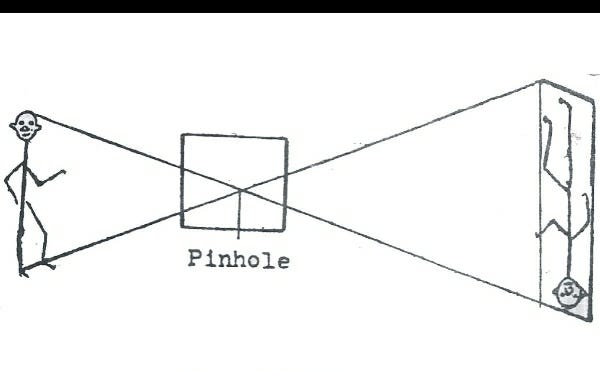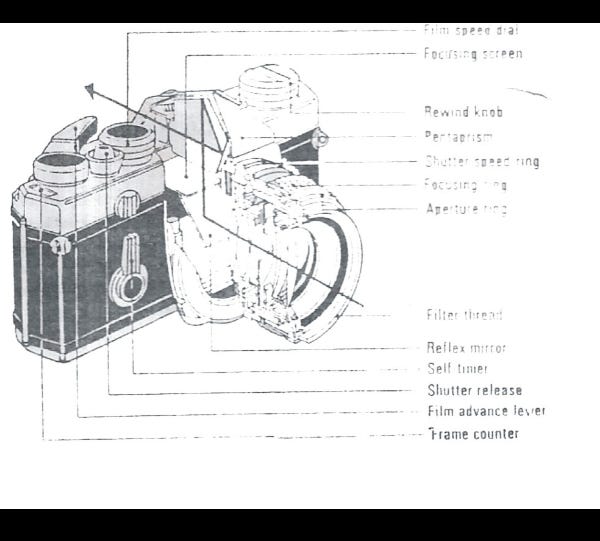Search Contents
You cannot successfully discuss journalism or writing without including photos. This is because photos are part of storytelling. This is what photojournalism is all about.

No one can successfully discuss Journalism without including Photography. This is because photography is part of Mass Media. Pictures compliment writings and pictures they say speak a thousand words. Photos on its own can stand alone and pass a message.
The study of cameras and photography for the mass media is known as Photojournalism. Parts of what you’re expected to learn and master in the course are camera essential parts and its handlings. It is not just about the knowledge of camera handling and photo shooting, it is also expected that you should learn all the parts of the camera, the types of camera, their workings, and technicalities.
An image which was reproduced with light dates back to the Ancient Greek. Aristotle represented light waves, and how they behaved, when projected through a pinhole called an aperture. Francis Bacon developed Aristotle’s principles. He used a dark room with a tiny opening in a wall to permit light to travel from the outside and to project an image on the opposite wall.

The device used for this experiment became known as camera Obscura which in Latin word means “darkened chamber”. Many artists including Leonard da Vinci used camera obscura to project images into the darkened chamber. An artist would carefully trace the projected image on the wall as it is seen.
An opaque projector is used in most graphic artist workshop today to trace images. The Pinhole camera was first used before the invention of the Camera lens. It consists of a box with a hole to admit light, image, and a negative to register the image.
Despite the development and changes of Still Camera in 1800, pictures were not used in the daily production of the Newspapers. However, the progress and development of photography were slow. It was in 1826 after a series of experiments that a Frenchman named Joseph Niepce succeeded in producing the first permanent photography called Heliogragh titled “image from Nature” which was taken from the window of his backyard. The exposure time of the Heliograph was 8 hours.
George Eastman, Kodak founder of the Eastman Kodak Company had the greatest impact on photography and motion pictures. He began experimenting with the manufacture of dry plates by going into partnership with H.A. Strong to manufacture dry plates. The Eastman Dry Plate Company began its operation to the public on January 1, 1881. Its aim was to make photography a mass medium. In 1990, he introduced the Brownie Camera, a simple box camera that was affordable to everyone at the cost of one dollar.
Mathew Brady made photographs of Abraham Lincoln when the civil war broke out in America. He received presidential approval to take photographs of the civil war which the sketch artists often misrepresented. His work remained one of the important beginnings of Photojournalism.
The Camera
A Camera is a device for making a record of the image of an object formed when rays of light passing through the lens are brought to a focus on a flat surface.


All Cameras are broadly divided into two categories; the Reflex and Non-Reflex camera. However, all cameras are basically similar and they have 7 essential parts in common which include:
- Light tight enclosure (camera body)
- Lens
- Lens diaphragm
- Shutter
- Viewfinder
- Film support channel
- Film advance and Rewind knob
Camera Parts and Functions
The Lens: This is the most important part of the camera. It is the eye of the camera. It picks up the image to be photographed, with the aid of light. Camera lenses have various kinds; the Normal Angle lens, the Wide-angle lens, Narrow-Angle lens, Telephoto lens, and the Zoom Lens.
Film Advance Lever: It is a device that moves the exposed film away from the film gauge, and advance a fresh film frame into position. It unlocks the camera so that a new picture can be taken.
Rewind Knob: The rewind knob takes back the exposed film into the film cassette and it is now ready for removal from the camera for processing. Depress the rewind button generally at the bottom of the camera box, this will disengage the take-up spool into a freewheeling position. Turn the rewind knob clockwise and the exposed film gradually returns to the cassette.
Viewfinder: The photographer looks through the viewfinder so as to catch a glimpse of the image or images to be photographed.
Shutter release: It is a device that activates the opening of the aperture to allow light to strike on the film base for exposure.
Shoehorn: This is a base where the flashgun is attached.
Camera Film Speed: They are numbers in the camera that range from 20–3200 in Pentax camera K. 1000. It is used to set the American Standard Association (ASA) Deuteuch Industrie Norm (DIN) of a film. Different cameras have various types of numbering of film speed.
Focus ring: This is a part of a camera that is used in focusing an object or objects to be exposed. A Single Lens camera Focusing ring is found close to the lens, and while in a twins lens camera, the focusing knob is seen at the right side of the camera.
Camera or Shutter Speed: The numbering on the camera that ranges from 2 to 1000 determines how long and aperture will remain open to allow light to pass through the lens on the film base.

This course was introduced in our third year as; ‘Introduction to Photojournalism 1 & 2’’. We spent a whole year going around a camera, mastering its handling and technicality. For some of the bogus terminologies, we had no option other than cramming them for the examination’s sake.
But Android has developed a user-friendly camera version. All the essential parts of a camera and the requirements in its handling are now pulled in one icon. It has been simplified in a way that a year-old baby can take a good shot. I was tempted to ask one day; I hope the 12 months course was not a waste of time?



